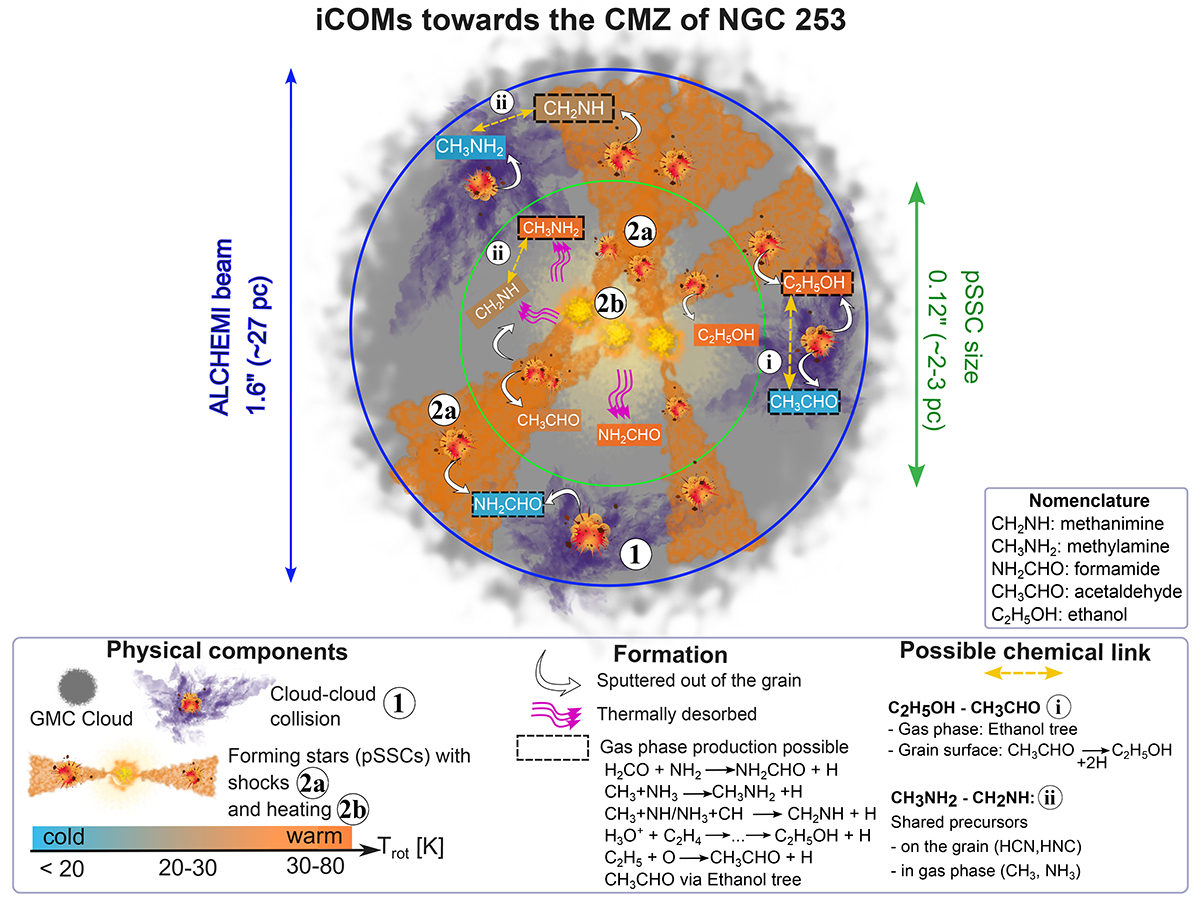Fig. 7.

Download original image
Schematic (not to scale) of summarising the possible formation pathways and chemical links between the iCOMs (Sect. 5.1) and their emission origins (Sect. 5.2) within a GMC. The temperatures reported are averaged over the region but there can be variation from one region to another. We assume the size of a GMC is comparable or larger than the size of the ALCHEMI beam of 1.6″ (or ∼27 pc). Formation and chemical links: Sputtering from the ice grain mantle and gas phase formation pathways are both possible to explain the iCOM emission at GMC scales, whilst at SSC scales, the dust temperature can be high enough to allow thermal desorption. CH3CHO and C2H5OH can also be chemically linked (i) both on the grain (with CH3CHO as the precursor of C2H5OH) or via the Ethanol tree in the gas phase (with C2H5OH as a precursor for CH3CHO). CH3NH2 and CH2NH could be chemically linked (ii) by sharing similar precursors, both on the grain or in the gas phase (if the gas temperature is higher than 100 K; e.g. Halfen et al. 2013). Origin: At the scale of GMCs, the iCOMs are likely tracing large-scale shocks, due to either cloud-cloud collision (1) or shocks related to star formation activity (scenario 2a; see also Huang et al. 2023). At pSSC scales, iCOMs could trace either star formation-related heating process (scenario 2b; CH3NH2, NH2CHO) and shocks (scenario 2a; CH3CHO, CH2NH, C2H5OH), associated or not (i.e. if cloud-cloud collision, scenario 1) with star formation.
Current usage metrics show cumulative count of Article Views (full-text article views including HTML views, PDF and ePub downloads, according to the available data) and Abstracts Views on Vision4Press platform.
Data correspond to usage on the plateform after 2015. The current usage metrics is available 48-96 hours after online publication and is updated daily on week days.
Initial download of the metrics may take a while.


